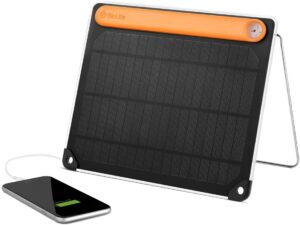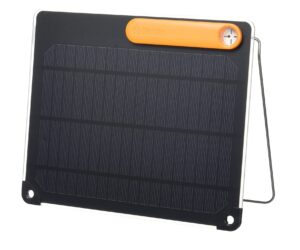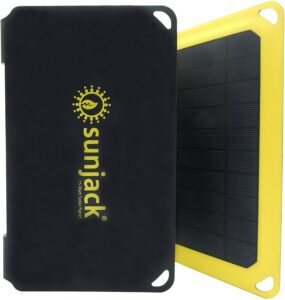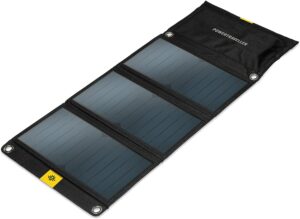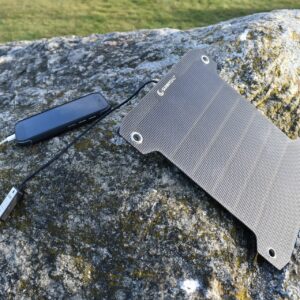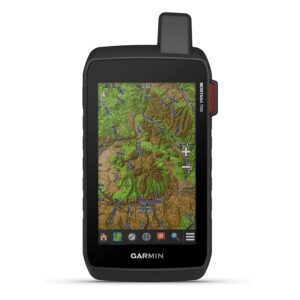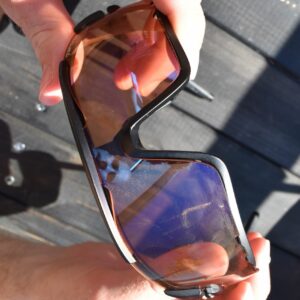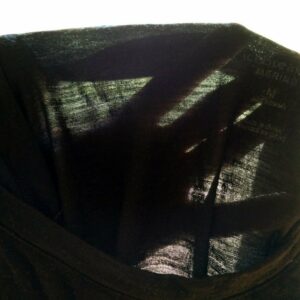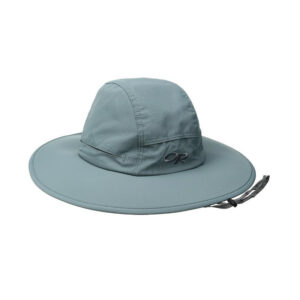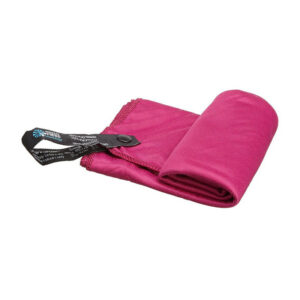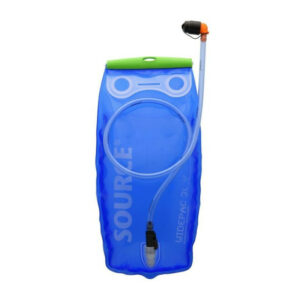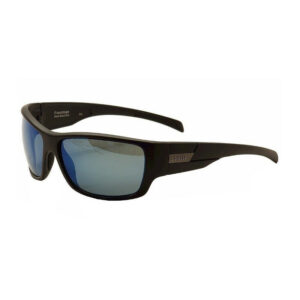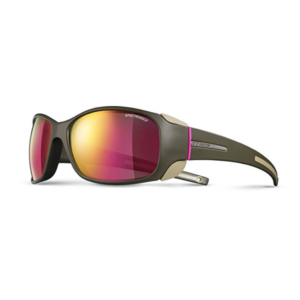A solar charger is a very useful gadget for long backpacking trips because it allows you to easily recharge your electronic devices such as a handheld GPS device, hiking watch or a smartphone. Since many backpackers rely on these devices for navigation along the trails, solar chargers have become very popular. Especially those who use smartphones for navigation on trails (check out our test of the best hiking apps) appreciate solar chargers, because no smartphone with GPS turned on constantly runs for more than a day without being recharged.
Solar chargers absorb sunlight and convert it to electricity which charges your devices or the battery pack. Unlike regular power banks which get drained sooner or later, solar chargers are suitable for very long trips because they allow you to recharge your devices as long as you have sunlight available.
In the following we listed the best solar chargers currently available to make your buying decision a little easier. We only listed high-quality solar chargers that come for a good price and provide good durability.
Updated Content
We regularly update our reviews and selections to always recommend you the best products on the market.
Expert Selections
We only list top-tier products. Read how our selections of best hiking products differ from others here.
Links
We use affiliate links and may receive a small commission on purchases at no extra cost to you.
1. Our Picks of Solar Chargers for Backpacking
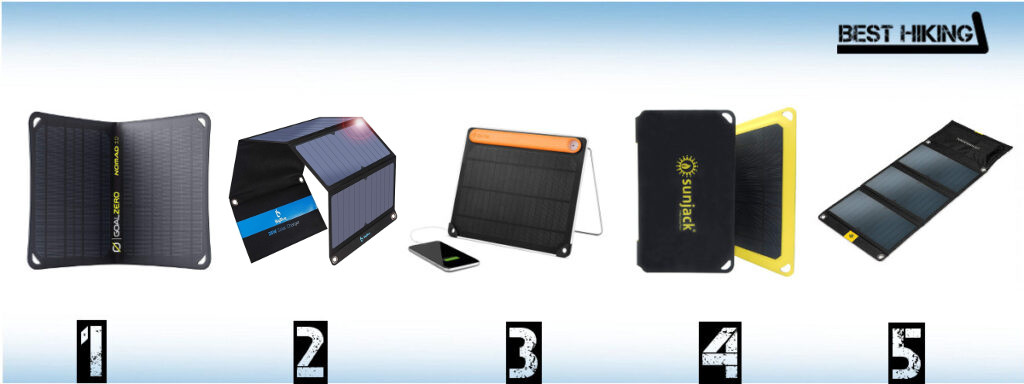
Best Solar Chargers for Backpacking
2. Comparison of Solar Chargers
| Feature/Product | Goal Zero Nomad 10 | BigBlue SolarPowa 28 | BioLite SolarPanel 5+ | SunJack 15W Portable Solar Charger | PowerTraveller Falcon 21 |
|---|---|---|---|---|---|
| Weight | 1 lb. 2 oz. (510 g) | 1 lb. 5 oz. (584 g) | 14 oz. (390 g) | 1 lb. 6 oz. (600 g) | 16.5 oz. (470 g) |
| Dimensions | 9.5 x 14.5 x 0.75 in. (24 x 18.4 x 3.2 cm) Folded | 11 x 6 x 1.3 in. (28 x 15 x 3.3 cm) | 10 x 8 x 1 in. (26 x 20 x 2.4 cm) | 10.5 x 6.5 x 1.2 in. (27 x 17 x 3 cm) Folded | 6.3 x 11 x 0.4 in. (16 x 28 x 1.1 cm) Folded |
| Type | Panels-only | Panels-only | Panels with integrated battery pack | Panels-only | Panels-only |
| Solar Panels Type | Semi-flexible | Semi-flexible | Rigid | Semi-flexible | Semi-flexible |
| Solar Panels Output | 10 watts | 28 watts | 5 watts | 15 watts | 21 watts |
| Battery Pack Capacity | / | / | 2200 mAh | / | / |
| Battery Pack Rechargers iPhone 8 | / | / | 1.2 times | / | / |
| Solar Recharge Time for Battery Pack | / | / | 2 hours | / | / |
3. The Selection
1. Goal Zero Nomad 10
Suitable for:
- Backpacking
- Hiking
- Trekking
- Mountaineering
- Camping
The Goal Zero Nomad 10 solar panel features built-in kickstand which clicks into place at multiple angles and allows you to position the solar panel perfectly towards the sun. It is made of rugged and durable materials, and can be strapped to your backpack, tent or other gear. The solar panel has an output of 10 watts and works perfectly with power banks from Goal Zero. The Goal Zero Nomad 10 solar panel is often combined with the Goal Zero Venture 30 power bank which has a capacity of 7800 mAh. The solar panel recharges this power bank in 4.5 to 9 hours. Nevertheless, the solar panel can also charge various devices such as cell phones, cameras etc. directly. The Goal Zero Nomad 10 is a powerful solar panel that is perfect for backpacking and other lengthy activities in the outdoors.
Pros:
- Durability
- Kickstand
- Attachment points
- Power
- Compact design
Cons:
- Lower power output may result in slower charging
Video

2. BigBlue SolarPowa 28
Suitable for:
- Backpacking
- Hiking
- Trekking
- Mountaineering
- Camping
The BigBlue SolarPowa 28 is a panels-only solar charger and thus it is a good option if you already have a battery pack/power bank. However, it is also suitable for charging electronic devices such as smartphones, headlamps etc. directly. The Big Blue SolarPowa 28 solar charger features advanced technology which discovers and replicates your device’s original charging protocol to provide the fastest possible charging speed via 3 USB ports. However, be aware that the solar panels will not generate enough electricity to match the device’s original charging protocol in case of cloudy or rainy weather. This BigBlue solar charger has attachment points, so you can easily attach it on a backpack. It is also water and dust resistant for good performance on hiking trails.
Pros:
- High power output for faster charging
- Price
- Weight
- 3 USB ports
- Compact foldable design
Cons:
- No kickstand
- May be a bit bulkier
3. BioLite SolarPanel 5+
Suitable for:
- Backpacking
- Hiking
- Trekking
- Mountaineering
- Camping
The BioLite SolarPanel 5+ is a solar panel with integrated 2200mAh battery pack. It features a built-in kickstand, battery/charge strength indicator and corner latches. The kickstand allows you to position the solar panel optimally towards the sun while the corner latches enable you to attach the solar panel to your gear. The solar panel outputs 5 watts and recharges the integrated battery in less than two hours. The BioLite SolarPanel 5+ weighs 14 ounces which is not a lot, considering that the battery is integrated. The solar panel is also equipped with sundial which helps you align the solar panel directly to the sun. The BioLite SolarPanel 5+ is a great option for various outdoor activities.
Pros:
- Kickstand
- Attachment points
- Integrated battery for energy storage
- Sundial
Cons:
- Lower power output for slower charging
Video

4. SunJack 15W Portable Solar Charger
Suitable for:
- Backpacking
- Hiking
- Trekking
- Mountaineering
- Camping
The SunJack 15W is a very durable panels-only solar charger. The solar panels have ETFE coating which withstands more temperature stress and chemical aggression than the typically used PET coating. The solar charger is also shock-, dust- and drop-proof. The solar panels are due to ETFE coating more efficient. According to SunJack they have UV permeability of 95%. The solar charger has two USB ports and a built-in IC chip which identifies your device and maximizes charging speed. Therefore, it can efficiently charge two different devices simultaneously. It comes with a carabiner so you can easily attach it to a backpack. It is perfect for charging cell phones, tablets and cameras on long backpacking trips.
Pros:
- Durability
- Efficient solar panels
- Attachment points
- High power output
Cons:
- No kickstand – harder to position towards the sun
5. PowerTraveller Falcon 21
Suitable for:
- Backpacking
- Hiking
- Trekking
- Mountaineering
- Camping
The PowerTraveller Falcon 21 is a panels-only solar charger. Nevertheless, it can charge up to two devices directly from the three efficient solar panels. The solar panels are made of durable fabric and IPX4 rated, which means that they can withstand water splashes from any direction for up to five minutes. The PowerTraveller Falcon 21 also has four attachment points in the corners, so you can easily attach it to your tent or other gear. It uses monocrystalline cells from SunPower which produce 25-35% more power compared to conventional cells. The PowerTraveller Falcon 21 is due to its power best for long backpacking trips.
Pros:
- High power output for efficient charging
- Foldable design
- High-quality solar panels
Cons:
- No kickstand – harder to position towards the sun
- Higher cost due to additional features and wattage
Video

4. Solar Charger Buying Advice – What is important?
Type:
There are three types of solar chargers; panels-only, panels with integrated battery pack and panels with detachable battery pack.
Panels-only
These solar chargers are the most popular because they can be used to either charge smartphones, GPS watches, headlamps etc. directly or to charge a power bank. You simply connect the solar panels to your device and the device will get charged with sunlight energy. However, before purchasing such a solar charger make sure that it is compatible with your device (connector type).
Panels with integrated battery pack
These solar chargers are usually very compact – the solar panels and the battery pack come in one piece. Therefore, they are great for attaching to a backpack. The disadvantage is that they are not modular. You can’t use the battery pack without solar panels or solar panels wihout the battery pack.
Panels with detachable battery pack
These solar chargers are basically panels-only chargers that come with a power bank. You can also use them without the included power bank.
Size and Weight:
The larger (and heavier) the solar panel, the faster it charges the battery pack. However, keep in mind that smaller/lighter solar panels are easier to pack and carry.
Type of the Solar Panels:
There are two types of solar panels: rigid and semi-flexible. Semi-flexible solar panels can be folded for easy carrying. When you need them, you simply unfold them and position them towards the sun. The main advantage of semi-flexible solar panels is that they have a large surface area despite being very small when packed.
Solar Panels Output:
The output of solar panels is measured in watts – the higher the output the more sunlight they convert to electricity per hour.
Attachment Options:
Solar panels typically have attachment points, so you can attach them securely to your backpack. Keep in mind that you need sunlight for solar panels to work and therefore you should keep them out of the backpack during the day when you will probably be hiking.
Battery Pack:
Although panels-only solar chargers can charge devices directly, it’s much more convenient to charge a battery pack (power bank) instead. Battery packs store more electrical energy and allow you to recharge your devices during the night when you are not using them. Battery packs differ in storage capacity and power output. The storage capacity is measured in mAh. The higher the storage capacity, the more times you can recharge your devices. However, keep in mind that a larger storage capacity also increases the weight and size of the battery pack. Most battery packs have a power output that is sufficient for charging electronic devices such as smartphones, GPS devices and GPS watches. However, battery packs can rarely charge bigger electronic devices such as laptops.
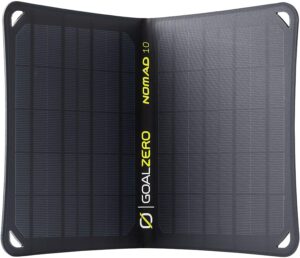

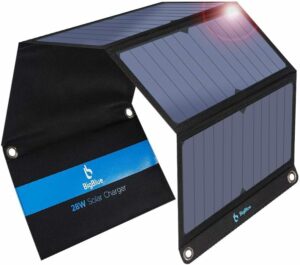
![[Upgraded] BigBlue 3 USB Ports 28W Solar Charger(5V/4.8A Max), Portable SunPower Solar Panel for Camping, IPX4 Waterproof, Compatible with iPhone 11/XS/XS Max/XR/X/8/7, iPad, Samsung Galaxy LG etc.](https://m.media-amazon.com/images/I/41gVrkEOUHL.SL250.jpg)
